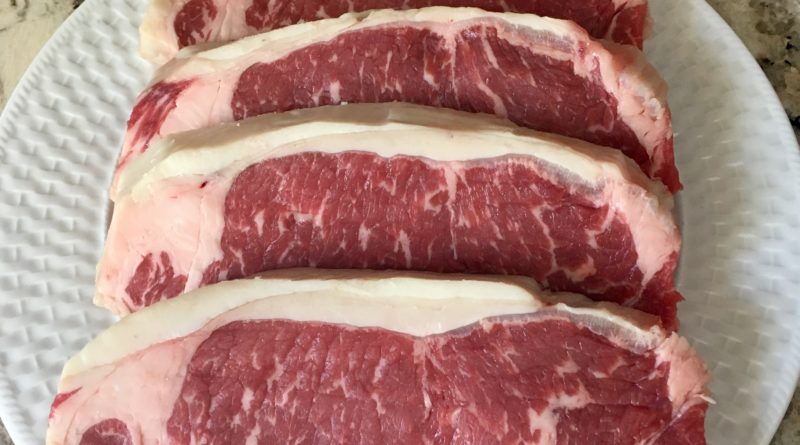Dry Aged Beef
The argument for dry aging is well founded. Historically beef was allowed to hang in the meat locker at the slaughter house for about 3 weeks before it was cut to order. Obviously, this led to a profit loss from evaporation and trimming. Money is always the bottom line for the commercial food industry – ALWAYS! With modern processing and shipping beef now goes from the hoof to the plate in less than a week. This is why beef has lost so much flavor and thus desirability.
Yesterday I was in the fancy butcher store close to my home. Needless to say I was shocked and appalled at the price of dry aged, prime grade, beef tenderloin. I kid you not, 39.99/lb. It goes without saying the price for other steaks was comparable as well.
Now let me start by saying a dear friend gave me a gift card from there for my birthday. She knows well my love for fine foods, bacon and good beef. She also knows that I will seldom indulge in such costly items. I skipped the beef and purchased some lovely steak sauces, vinegars, olive oil and a sarsaparilla soda. It was delicious and I may go back for another, doubtful at $2.13 but within the realm of possibility for a treat.
Anyway, it prompted me to share the technique for dry aging beef at home. You can go into Costco and purchase prime grade whole tenderloins, trimmed and peeled for $21.99/ lb. Whole NY strip runs about $12.99/lb and whole boneless Rib Eye about $14.99/lb. That is almost a 50% savings for just a few minutes work and having the patience to age your own.
You will need:
A sharp slicing or chef’s knife
A paring knife
A cookie sheet covered with aluminum foil
A rack to fit inside the cookie sheet, I use a bakers rack
Cheese cloth
A whole tenderloin, NY strip or boneless Rib Eye
Place the rack inside the foil covered cookie sheet, remove the beef from the packaging and pat dry. Lay the beef on top of the rack, fat side up and cover with 3-4 layers of cheese cloth.
Place the finished product on a shelf in your refrigerator. Set an alert on your calendar to turn it over every other day replacing the cheesecloth on top of the beef after turning. I like to age mine 1 day per pound to a maximum of 15 days for a really large NY strip or rib eye.
When the aging process has been completed transfer the beef to a clean surface or cutting board and shave off any of the hard, dry or gray pieces. The goal is to shave down to a beautiful dark red moist meat, leaving a 1/8 –1/4 inch fat layer where applicable. Slice into steaks of the desired thickness and grill or package in freezer bags for later use. Often I will use ½ of a tenderloin or prime rib for a roast and carve the other half into steaks and freeze for later use.
I like to dry rub them simply with salt, pepper and garlic about an hour before grilling. Always allow steaks to come to room temperature before grilling unless your goal is blue rare. Just remember that dry aged steaks will cook in 1/2 – 2/3 the time of “fresh” steaks. Use a light hand with whatever rub you choose to use, you do not want to mask the rich flavor of the beef.
If you don’t have time to do the full aging don’t sweat it – even a few days will lead to a much improved flavor and texture of beef. I’ve been known in a pinch to buy steaks 1-2 days ahead and place them on a rack to help evaporate the water before grilling. It dramatically improves the flavor.
Dry aged beef is wonderful accompanied by a simple potato or rice dish and asparagus or fresh green salad. Don’t try to fancy the meal up with side dishes, I promise you the beef will be the super star and the focus of the meal. Serve it with a heavy Cabernet Sauvignon or an Old Vine Zinfandel and you will have them coming back for more.
The displayed pictures are a NY strip I recently aged – that’s what’s cooking in Nana Walton’s Kitchen.

